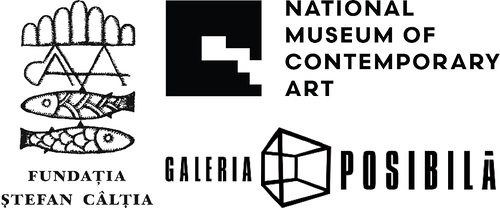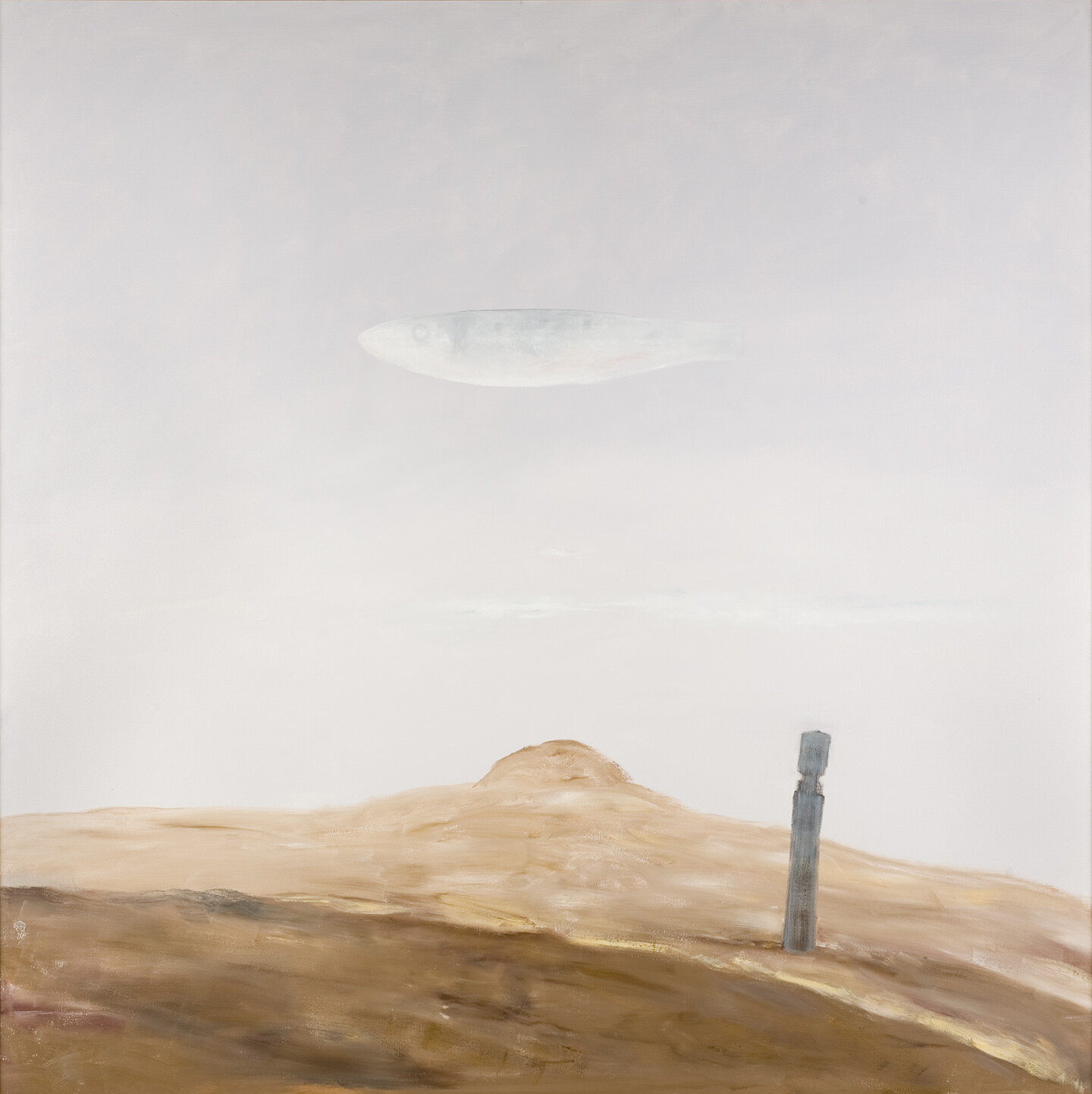Impressions of a Lived Time
December 8, 2022–April 16, 2023
Intrarea E1, Calea 13 Septembrie 1-3
Palatul Parlamentului
050563 Bucharest
Romania
Hours: Wednesday–Sunday 11am–6:30pm
info@mnac.ro
Curators: Alexandra Manole, Cătălin Davidescu
Curatorial assistant: Monica Dănilă
The curatorial approach adopted for Impressions of a Lived Time seeks to emphasize an interpretation of works made during tumultuous times as still being valid in today’s narratives, through a systematic study of the lesser-known works of Ștefan Câlția. The artist is well-known on the local contemporary scene in Romania, belonging to a generation educated during the 1960s and 70s, and who went through communism with a non-activist, and thus non-conformist attitude. The curatorial research seeks to place him on this spectrum of the Eastern and Central European art scene.
Ștefan Câlția (b. 1942) is an artist who studied in Timișoara (1955–1963) and, later, in Bucharest (1964–1970). Since 2000, when Galeria Posibilă was founded as a private gallery in Bucharest dedicated to curatorial research, he has been one of its represented artists with several researched exhibitions and publications within public institutions. More recently, a foundation opened under his patronage takes care of his artworks, while also seeking to develop a cultural center for contemporary art in the village of Șona.
The exhibition at the National Museum of Contemporary Art in Bucharest presents an overview of his practice through narrative structures inspired by works created between 1965 and 1995 together with a foray into his recent practice. It presents a series of large drawings that were created during the early years of transition amid a political atmosphere described as neo/post-communist and against a state of acute moral instability. The interpretation of these works takes us back to Hannah Arendt’s interpretation of imperialism as “unlimited expansion” which “seemed to offer a permanent remedy for a permanent evil,” or to Thierry Wolton’s definition of nationalism as “tending to identify an enemy and then to interpret the past to its advantage,” mobilizing the masses through use of propaganda.
Similarly, the graphic works created in 1968 during the invasion of Czechoslovakia can be viewed in tandem with the drawings produced in 2022 in the context of the war in Ukraine. The continuity of these symbolic figures when discussing the spectrum of evil is interpreted through Mikhail Shishkin’s arguments on the current war: “The next Putin, too, will be nothing more than an actor who cannot change his role. His role will be pre-written by the entire Russian power structure, which doesn’t worry about how many people will die in Ukraine or Russia or wherever. […] It’s high time the free world realized that it is not fighting a mad dictator but an autonomous and self-regenerating aggressive power system.” (Shishkin, 2022)
The painting The World as Theatre, a triptych created in the tense years of 1987–89 is a grotesque convoy that follows a predetermined direction indicated by a demented leader, reminding us of The Vehicle created in 1973 by the Polish artist Krzysztof Wodiczko which depicts a means of transportation that only moves forwards. A similar kind of induced discourse is to be found in Path (1980), a painting through which we discuss a heavily collectivized landscape. Collectivization generated massive changes in the landscape, not only physically, but also in terms of the way people relate to nature, the ecologist Tibor Hartel explains, such that today a socio-ecological disaster ends up becoming a reference point for society.
An artwork carries within it the message beyond the historical event it was born of, while the interpretation of evil as a moral/universal dimension helps afford it relevance today, given current concerns about illiberal governments, climate and economic crises, the lack of freedom and equality, the fake democracies and totalitarian systems still influencing geopolitics, and the breakdown in social connections. The visual inscriptions in the works are open to the discourses suggested through the current exhibition, which brings to our attention on the one hand a deeper knowledge of the sources inherent to artistic practice, and on the other hand an awareness of the different significations of the world we live in.






